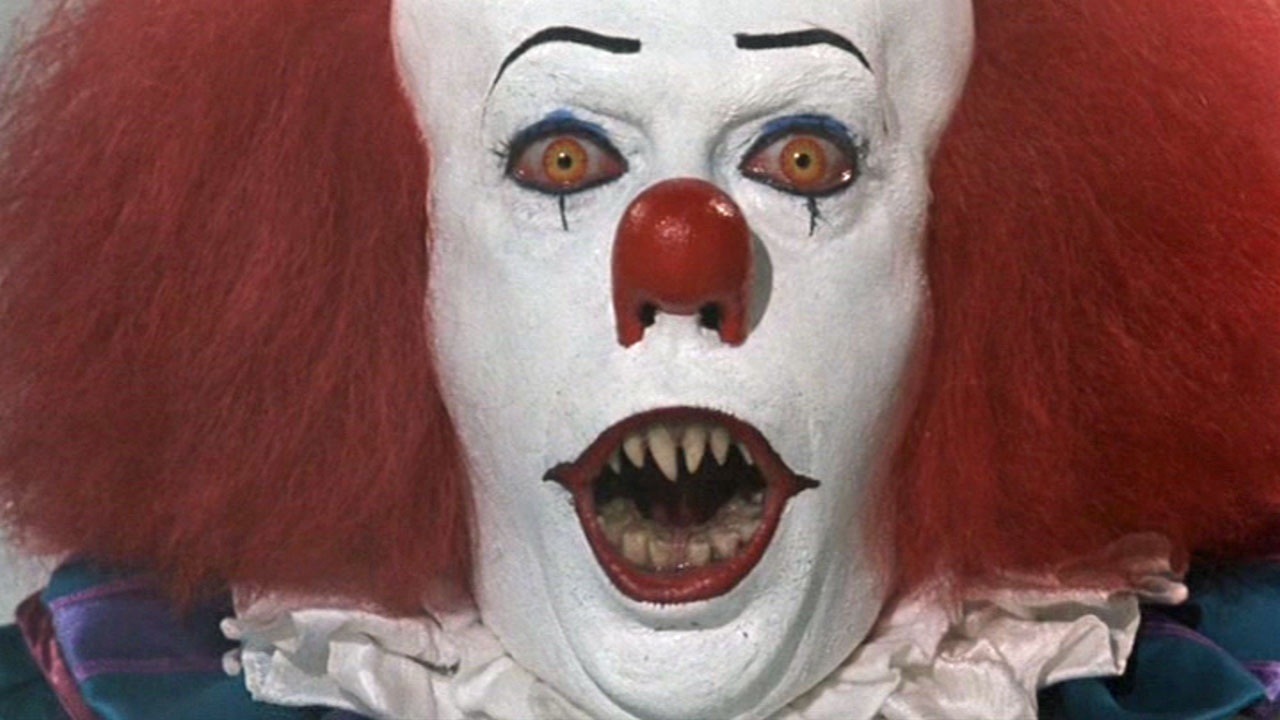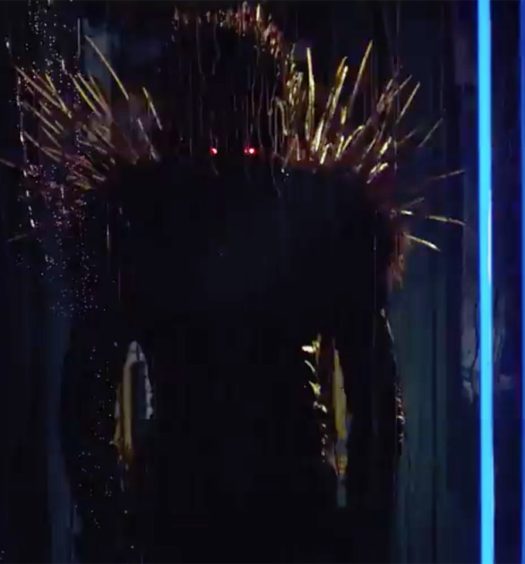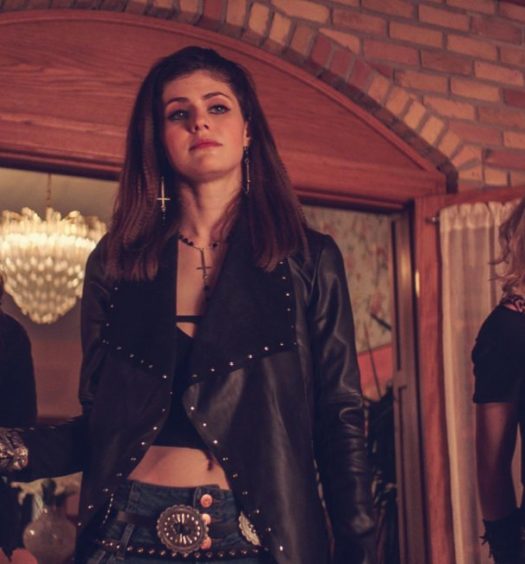If you’re reading this, then we agree: Clowns are scary. They smile, slither, lunge and laugh at us in and out of our nightmares with an unsettling mix of mirth and murder. And if the recently released trailer for the feature-film version of IT tells us anything, we better learn to deal with it because they’re here to stay.
Clowns have always tight-roped a thin line between entertaining fool and devilish lunatic
Since the bygone days of court Jesters and the fools of Kings, the Clown has been with us. Acrobatic men in funny costumes and makeup have cajoled and cavorted before an audience of all ages for centuries, bartering for humanity’s curiosity, attention and laughter. When we think of the clowns of ancient Greek and Roman theatre, of merry-old England, dressed in their harlequin bells and pointed hats, faces painted in exaggerated smiles of endless merriment we tend to believe their primitive routines earned smiles and giggles from the audience of history. But did they? Or is Coulrophobia — the fear of Clowns — a modern day phobia born when the devilish fiend Pennywise pranced from the pages of the 1986 Stephen King novel? If a brief examination of history teaches us anything, Clowns have always tight-roped a thin line between entertaining fool and devilish lunatic like they do today. Because whether it’s Egypt’s Fifth Dynasty or Stephen King’s fifteenth novel, the Clown has had it rough. So, put on your red nose, slip into those floppy shoes and grab your sharpest knife. We’re stepping into the fun-house.
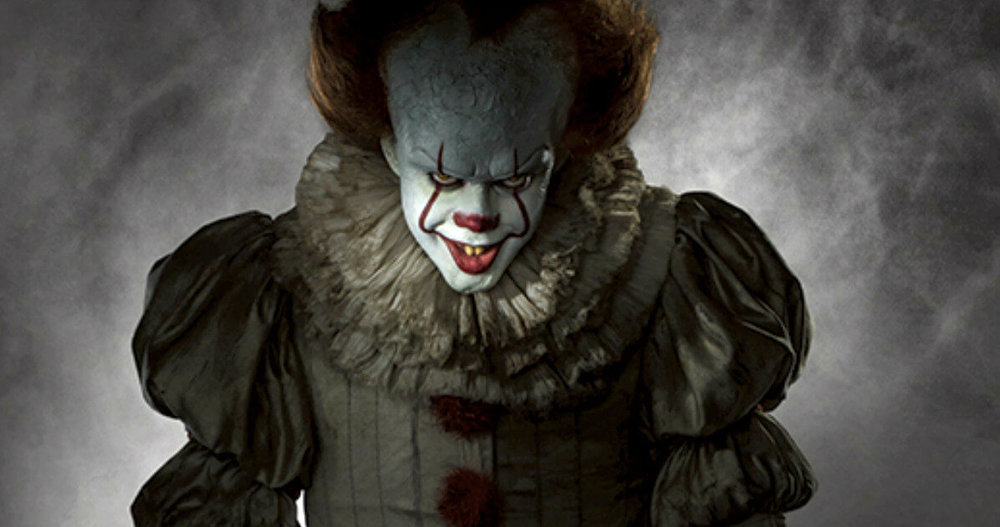
“Dangas” were the first Clowns. That was the word for the short-statured African pygmies who would entertain royal families and Pharaohs in ancient Egypt, circa 3000 BC. Next came the fools and jesters who delighted the aristocracies and emperors of Rome, China and even early Native American chieftains. In Clown history, these acrobatic pranksters were many times the only ones able to defy Kings and ridicule Lords without fear of responding torture and a ghastly death. For centuries, the mirrors which clowns bravely held up to the violent and tragic societies they existed within, have been and still are, the very shields which protect them. The same rings true today, because whether we experience Clowns as children or adults, they represent a life-size version of the two-sides of Man–Love and Death–and they do this wrapped in cheerful benevolence behind a mask of paint and a permanent smile, asking the question: Do I represent love? Or insanity?
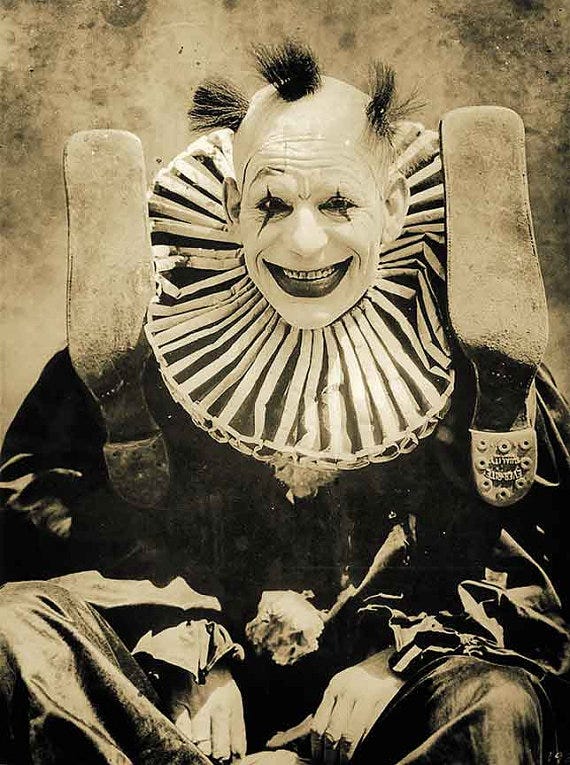
Before the 19th century, clowns were tricksters, entertainers and theatrical showmen who had more in common with actors than buffoons, performing biting humor and pantomimes intended to lampoon and satirize. The Clown we imagine today, with its funny red nose, bright costume and pancake makeup is a fairly modern invention, far-removed from those early performers. Best represented by Britain’s Joseph Grimaldi and France’s Jean-Gaspard Deburau, these men became international sensations in their prime, only to have their careers take tragic and dark turns at the end. Grimaldi’s included a failed suicide pact by poison between he and his son while Deburau, the master of Pantomime and a known Opiod addict, brutally murdered a young boy with a walking stick. By the late 19th century, both in Europe and a growing America, clowns had become mainstays at a new venue: the Circus. It was here where clowns essentially lowered the artistic bar while raising the risk, combining chaotic performances with death-defying acrobatics, wild animals, and fire. What ever could go wrong?
The 20th century saw the Clown grow up, but strangely enough lose whatever maturity it once had. The television-age saw celebrities like Bozo the Clown, Clarabel and Ronald McDonald become living, breathing franchises, portrayed by multiple actors whose on-air and off-air performances were marketing pieces for children’s toys, fast-food and breakfast cereal. Clowns were no longer thought of as people with stage-names performing zany plots and story-lines; they had become commercial representations whom adults dismissed as shallow entertainment, but whom children were left alone with. In other words, Clowns had become things.

“You know, Clowns can get away with murder” — Pogo the Clown
Instead of painting rounded corners on the mouth of his clown makeup, John Wayne Gacy, one of the most infamous serial killers in U.S. history, drew sharp ones. He blatantly ignored a traditional guideline of the modern-day Clown: rounded corners tend not to scare children. The fact that this simple suggestion was commonplace among Clowns in the mid-1970s highlights the hurdles faced by those who chose a profession as old as the Pharaohs. Clowns knew they were scary and by this time had taken steps to minimize that dark and inescapable fact as much as possible, but the damage was done. Although the vast majority of the men and women who performed for the masses as Clowns were no more harmful to the public than the wigs on their heads and the noses on their noses, any tenuous hold Clowns ever had on innocence was lost. Enter the Horror story.
Throughout the 1980s, the influence on Horror that Gacy and the brightly colored, faceless beings that Clowns had become was apparent. Pennywise, the demonic clown-form favored by an ancient evil in Stephen King’s 1986 novel, IT encapsulated the evil clown archetype perfectly, one that preys on the naive hopes of children in Derry, Maine, a town where evil lurks just below a friendly facade. That very same decade saw multiple Horror films join the party: Funhouse (1981), Poltergeist (1982), Funland (1987), Out of the Dark (1987), Clownhouse (1989) and of course, the hugely successful ABC television series of King’s novel in 1990. The next two decades would further cement the Clown’s place on our list of cultural monsters, as these evil pranksters appeared in even more films, books and television shows. Even our own neighborhoods were and are not immune from Clown horror as social media has helped accelerate the rise of “Clown Sightings” in the UK and America as recently as this year.

So, when did Clowns get so scary? Turns out, they always were. Clowns have forever represented a form of anarchy and rebellion, with none of the required consequence. And they do it all inside a body we recognize, but with a contorted face and an apparently forced and permanent smile. Historically, whether we experience him as adults or as children, we have always hoped for the best from the Clown, but we cannot deny he is a mystery all the same. Clowns represent the unknown. And if there’s one thing we have always loved about Horror novels, Horror movies and Horror in general, it’s the celebration of that unknown. Long live the Clown.

